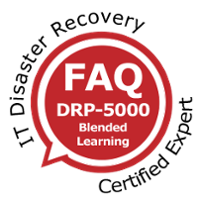Criteria for Appendices
The appendices of the DR Plan will cover details that you can easily detach for specific usage for specific people, information that changes quite frequently (likes the contact list) and key details not contained in the main body of the plan.
The guideline for including appendices to the DR Plan is that it must reflect at least one of the following specific requirement for an IT system:
- Technical
- Operational
- Management instructions
Benefits of Appendices
Good sequencing of detailed and yet frequently changing DR information when put into appendices will help you in:
- Easier management and keeping the DR Plan up-to-date
- Reducing paper usage as there will be lesser need to re-print the entire DR Plan for distribution
- More systematic way of managing the distribution and collection of DR Plan updates from all DR team members
Common Appendices Items
Some of the common items that you may want to cut out from the main DR Plan and insert as appendices are:
- Contact information for key decision makers, critical resource providers and also the people who execute the DR Plan such as Executive Management, DR Teams, key suppliers, system vendors, offsite storage vendors, emergency authorities and building management
- SLAs, contracts and agreements with vendors who are required to support the recovery and operation of the DR site and facilities. Some examples are the hot-site contract document, off-site storage agreement and agreement for providing specific hardware with specific delivery time
- Hot-site or recovery site address, location map, transport availability, contact numbers, activation sequence, activation codes or passwords, etc.
- Equipment and system inventory lists that cover all details such as manufacturer, model, and make, version number, license number, serial number, quantity, for all hardware components, firmware versions, operating system, application system and other resources that are required to support the operation
- BIA document that contains valuable information about the interrelationships, risks, prioritization and impacts to each element of the system
Conclusion
It is important to note that a DR Plan is a “living” document that is refined over several iterations. This document needs to be updated over time; no matter how well was developed initially. Do not be discouraged as most plans will fail during the execution initially but the key is to continue to improve the plan so that it will work and when it is needed.
Reference
Goh, M. H. (2016). A Manager's Guide to Implementing Your IT Disaster Recovery Plan. Business Continuity Management Specialist Series (2nd ed.). Singapore: GMH Pte Ltd.
Extracted from "Chapter 12: Plan Development"
More Information About IT DR Blended Learning
To know more about our blended learning program and when the next course is scheduled, feel free to contact our friendly course consultant colleagues via sales.ap@bcm-institute.org. They are the BL-DR-3 Blended Learning DR-300 IT Disaster Recovery Implementer and the BL-DR-5 Blended Learning DR-5000 IT Disaster Recovery Expert Implementer.
 |
 |
 |
 |
 |
 |
 |
Please feel free to send us a note if you have any of these questions to sales.ap@bcm-institute.org |
 |




